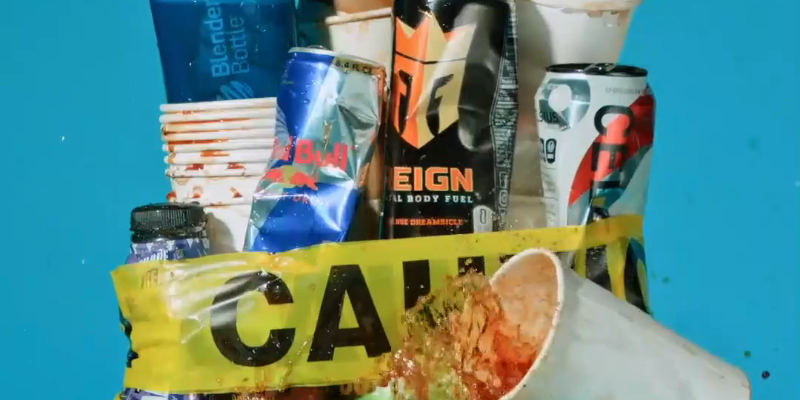All That Caffeine You’re Drinking May Be Doing More Harm Than Good

KEVIN CARLEY was on the treadmill, pushing himself toward a seven-minute-mile pace, but something didn’t feel right. He began to slow down, his heart pounding. Frustration set in—he had only done an easy recovery jog the day before, so why couldn’t he catch his breath?
Carley didn’t think he had done anything out of the ordinary that morning. He had felt fine when he woke up, had a little coffee, and then took what he thought was a safe dose of pre-workout, a supplement he had been using for years.
Back in the late ’90s and early 2000s, while he was in the Marine Corps and benching 375 pounds, Carley had tried all sorts of supplements—Yellow Jacket, Jack3d. He was also a big coffee drinker. Now, in his IT job, he drank four cups of coffee a day, sometimes even adding a 5-Hour Energy. When he ran or lifted weights, he would scoop some pre-workout for an extra boost—feeling energized, powerful, and fast.
He doesn’t remember exactly when things took a turn, but what started as feeling off on the treadmill quickly escalated to him collapsing on the floor of the YMCA. Onlookers assumed he had fainted from exhaustion. A doctor nearby saw Carley’s color change from blue to gray and rushed to his side, finding no pulse. The YMCA had a defibrillator, and the doctor quickly stripped off Carley’s shirt and applied the paddles.
Carley had unknowingly consumed at least 500 milligrams of caffeine from his pre-workout, followed by a cup of coffee earlier. This meant he had ingested roughly 600 milligrams of caffeine within an hour.
While the FDA suggests that toxic effects may occur from consuming around 1,200 milligrams of caffeine in a short period—which can cause symptoms like heart palpitations, high blood pressure, and increased heart rate—Carley’s intake was far below that threshold. However, the combination of intense exercise and high caffeine intake significantly increased the strain on his heart.
During months of pandemic isolation, as sweatpants became the norm, consumers began shifting their habits. Wellness products started flying off the shelves.
Stories like Carley’s are alarming, and doctors and researchers are noting a rise in caffeine-related health incidents. What’s interesting is that no single source of caffeine can be pinpointed as the sole culprit.
Take, for example, Panera Bread’s Charged Lemonade, which was pulled from shelves last year after lawsuits claimed the highly caffeinated, sweetened beverage was linked to two deaths and severe health issues for a third individual. Similarly, in March, MMA fighter Zach Doran, 18, collapsed during a fight after consuming an energy drink and later passed away. In Carley’s case, it was coffee first, followed by pre-workout.
Chances are, whether you realize it or not, we’re all consuming far more caffeine than before. A 2022 survey by market research firm Kantar revealed that people who regularly consumed caffeinated drinks were ingesting 27 percent more caffeine compared to those surveyed in 2010. You might assume that this surge is due to a shift from coffee to energy drinks, but a 2024 survey found that daily coffee consumption in the U.S. is at its highest level in over two decades.
So, drinking more coffee or tea isn’t the issue. Both beverages have long been recognized for their health benefits. The problem arises when caffeine is isolated and added to energy drinks, sugar-laden lemonades, and pre-workout supplements. It’s not just about how much caffeine we’re consuming—it’s also about how we’re consuming it.
When Travis Hunter, a University of Colorado Boulder athlete, won the AP College Football Player of the Year award in 2024, energy drink brand Celsius proudly celebrated by claiming him as "our very own, Travis Hunter."
To casual onlookers, this might have seemed like a victory for the brand—one of its sponsored athletes snagging such a prestigious award. But Celsius, already the hottest caffeinated beverage brand, would have been in the spotlight even if Hunter hadn’t won. Earlier that year, the brand had signed all six leading Heisman candidates to sponsorships.
If it feels like Celsius and its sleek white cans—promising to boost metabolism and burn body fat—are everywhere, that’s because they are. Celsius has risen to become the third-most-popular energy drink in the U.S., following Red Bull and Monster Energy. In fact, had you invested $1,000 in Celsius five years ago, you’d now have $10,580.
Celsius faces stiff competition from other brands like Alani Nu and Reign, which are also targeting the athletic market. Add to that the explosion of "charged" drinks and probiotic sodas (some of which contain caffeine), and there are now a staggering 970 caffeinated beverages on the market, up from just 559 in 2010.
What’s more, the caffeine content in many of these drinks has been cranked up. Some Celsius cans contain 270 milligrams of caffeine—more than one and a half times what’s in a typical Monster, and about three times the amount in a Red Bull. For comparison, an eight-ounce cup of brewed or instant coffee contains between 60 and 95 milligrams of caffeine.
Yet, Celsius’ rise to dominance is an unlikely one. Its journey from near-bankruptcy to your TikTok feed is a testament to the caffeine overload of the 21st century. Back in 2012, Celsius was on the verge of folding. That year, Costco—accounting for 60 percent of its revenue—pulled its products from stores due to poor sales. Walgreens and CVS followed suit, and the company’s stock plummeted to just 9 cents a share. At the time, Celsius, with its text-heavy design boasting "burn more calories plus lasting energy," wasn’t just uncool compared to Red Bull—it was seen as a health drink.
Published:
08 May 2025





Share Post: